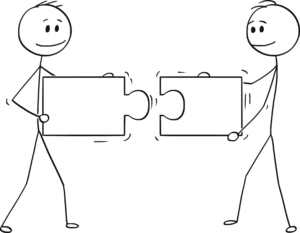
Methods and Tools
A method is often a combination of patterns used for a specific purpose. You can usually follow the steps and adapt the method. Here you will find several practical methods such as how to start meetings, make decisions with a group, break a deadlock in a discussion and prevent conflicts from escalating.
Tools, in this context, are models that explain things and, in some cases, suggest what you might do.

Checking in
Checking in at the start of a meeting or conversation involves asking one or more questions to which participants respond. The nature of these questions determines the effect of the check-in. This tool helps to create safety in a group and fosters a climate of openness and clarity.

Frame the conversation
This pattern is about setting people at ease and giving them a sense of what they will be doing for the next few hours. Providing a framework for a meeting or conversation implies setting boundaries for what will be covered and what not.

A conversation from two sides
The conversation from two sides (sometimes called The Argument) explores an issue by accentuating and exploring the polarity. It helps to resolve the problem of a conversation getting stuck or a conversation going around in circles.

Making decisions that include the no
Clear decisions are important. A minority voice that is ignored by the majority risks creating a sense of marginalization and escalation of tension. Including the wisdom of the minority, voice is possible if this wisdom is integrated into the majority decision. The “No” is not limited to the minority voice, it can also mean the dissenting, critical or doubtful voice in an individual or a group.

The Resistance Line
The Resistance Line is a tool that helps to track the development of tension and resistance in any situation. It is an analysis tool that raises awareness of resistance long before the conflict becomes visible, allowing you to take measures to reduce tension and prevent it from becoming destructive. In cases where conflict has escalated, it helps determine the necessary…

Design to create trust
When designing a public dialogue process, we need to consider both the institutional and collective dimensions in order for the dialogue to lead to sustainable results

